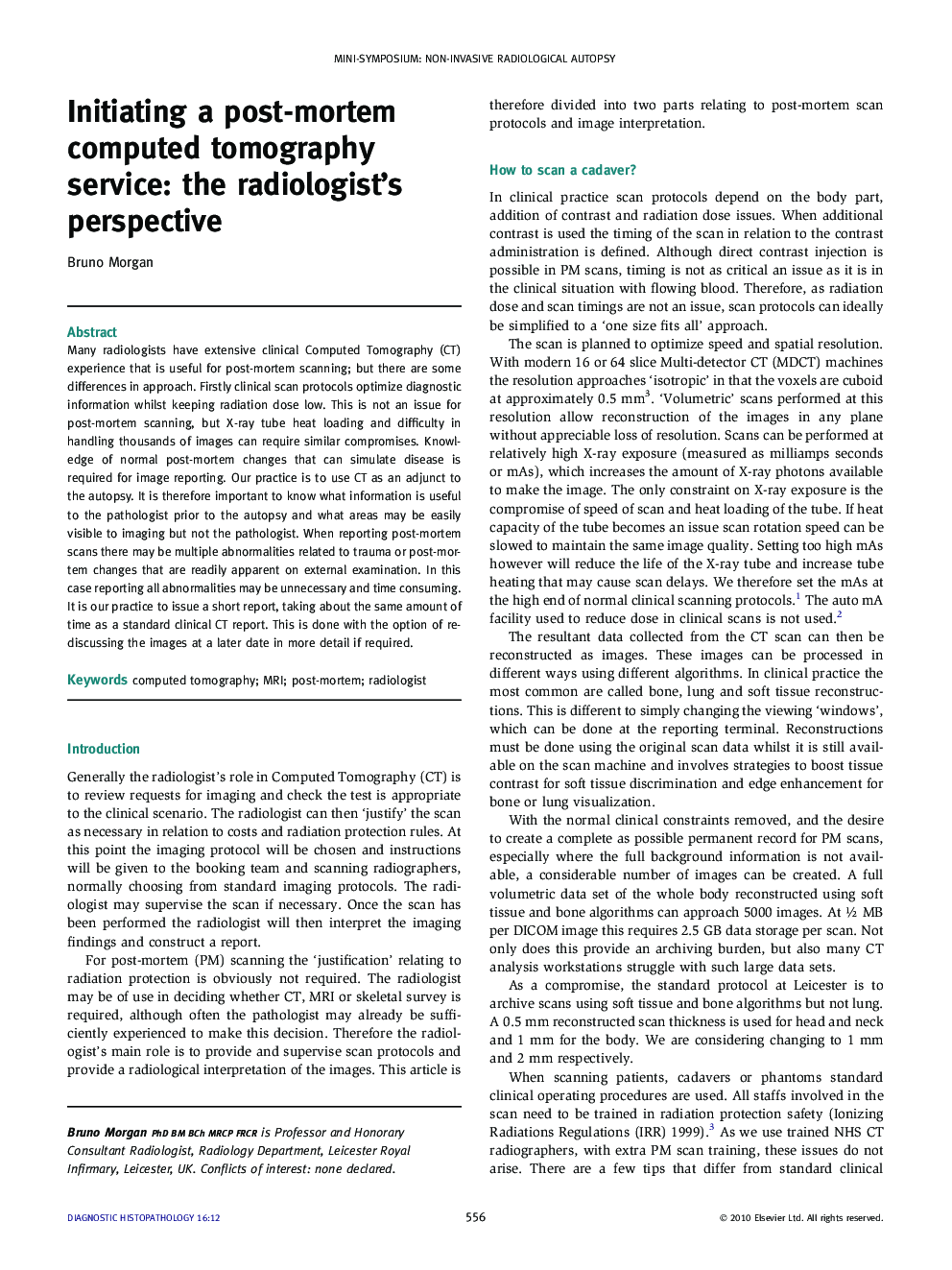| Article ID | Journal | Published Year | Pages | File Type |
|---|---|---|---|---|
| 4131326 | Diagnostic Histopathology | 2010 | 4 Pages |
Abstract
Many radiologists have extensive clinical Computed Tomography (CT) experience that is useful for post-mortem scanning; but there are some differences in approach. Firstly clinical scan protocols optimize diagnostic information whilst keeping radiation dose low. This is not an issue for post-mortem scanning, but X-ray tube heat loading and difficulty in handling thousands of images can require similar compromises. Knowledge of normal post-mortem changes that can simulate disease is required for image reporting. Our practice is to use CT as an adjunct to the autopsy. It is therefore important to know what information is useful to the pathologist prior to the autopsy and what areas may be easily visible to imaging but not the pathologist. When reporting post-mortem scans there may be multiple abnormalities related to trauma or post-mortem changes that are readily apparent on external examination. In this case reporting all abnormalities may be unnecessary and time consuming. It is our practice to issue a short report, taking about the same amount of time as a standard clinical CT report. This is done with the option of re-discussing the images at a later date in more detail if required.
Related Topics
Health Sciences
Medicine and Dentistry
Pathology and Medical Technology
Authors
Bruno Morgan,
